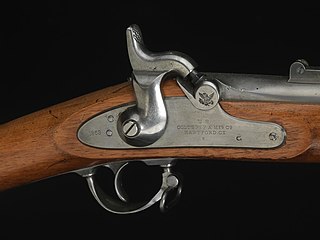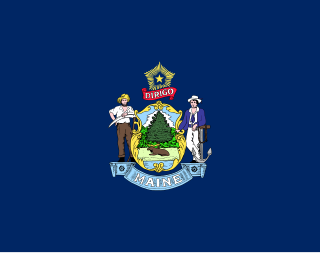Service
1861
The regiment was organized in New York City and was mustered in for a two-year enlistment on April 23, 1861. It was nicknamed "The Steuben Rangers". Early in its training, it was so poorly equipped that a civilian who visited the troops wrote a letter to the editor of The New York Times (published May 16, 1861) complaining that tailors within the regiment had to resew the uniforms and put buttons on them, and that some of the soldiers were wearing "flip-flaps". The letter-writer was impressed (spelling and punctuation as in the original):
I have seen no troops before, and I have seen none since, in which there was the same indescribable aspect of discipline. The men were not in uniform, but very poorly dressed, — in many cases with flip-flap shoes. The business-like air with which they marched rapidly through the deep mud of the Third-avenue was the more remarkable.
With "one or two exceptions" almost every officer then in the regiment had experience in European armies, and six out of eight of the soldiers had seen service, often in battle. "The only arms they have as yet are a few old muskets bought by the officers themselves."
The regiment, commanded by Colonel John E. Bendix, was accepted by the State, April 26, 1861; organized at New York city, and there mustered in, the service of the United States for two years, on April 23, 1861. Company I was recruited at Brooklyn, the others in New York City.
1862
It left New York for Fortress Monroe on May 24, and was quartered at Newport News. It took part in the engagement at Big Bethel and returned to camp at Newport News until in March, 1862, when it was assigned to the 1st brigade, 1st division, Army of Virginia. It then served in the 1st Brigade, 1st Division, 2d Corps, Army of the Potomac, from May 1862, with which it served through the campaign on the Peninsula,taking part in the Seven Days' battles with heavy loss. At Antietam it lost 15 killed and 49 wounded, but its heaviest loss was at Fredericksburg, when 243 members were killed or wounded out of a total of 488 engaged.
1863
On April 25, 1863, the original two years' members were mustered out at New York City and the three years men were transferred to the 52nd New York Regiment but not absorbed by them until after the battle of Gettysburg in July, 1863. The 7th was active in the Chancellorsville campaign and at Gettysburg, after which the remnant of the 52nd and the 7th was consolidated with the 7th New York Veteran Infantry. On July 22, 1864, the few remaining men were then transferred to the 7th New York Veteran Volunteers.
Commanded by Colonel George W. Von Schack at the completion of its service, the regiment was honorably discharged and mustered out, May 8, 1863, at New York City.
On May 6, 1863, Colonel Von Schack received authority to reorganize, for a period of three years, the 7th New York, then about to be mustered out by reason of the expiration of its term of service.
To effect the reorganization the following were appointed by the Governor, May 6, 1863, but not commissioned:
- George W. Von Schack - Colonel
- Frederick A. H. Gaebel - Lieutenant Colonel
- Charles Brestel - Major
- Peter Hesse - Adjutant
- F. C. G. Moyne - Quartermaster
- Charles Gray - Surgeon
These appointments became void on the discontinuance of the reorganization on October 14, 1863, when the men enlisted were transferred to the 178th New York Infantry.
1864
In spring, 1864, Col. George W. Von Schack, under his former authority, again commenced the formation of a regiment, under the above title, and the organization took place at Hart's island. New York harbor. The companies were mustered in the United States service for three years ; A, B, C, D and E March 29, May 1, June 4, July 15, and August 9, 1864, respectively; for one, two and three years. Company F, September 1, 1864; for one and three years, Company G, September 17, 1864; and for one year. Companies H, I and K, October 13, 22, and 31, 1864, respectively.
The three years' men of the original 7th Regiment, serving with the 52nd Infantry, were assigned to Companies A, B, C and D of this regiment, July 22, 1864. The companies were recruited principally:
- A and C at Brooklyn and New York city
- B at Brooklyn, New York city and Albany
- D, E, F, G, H, I, and K in New York city, Brooklyn, Jamaica, Tarrytown, Albany, Poughkeepsie, Goshen, Schenectady, Kingston and Troy.
The regiment left the State in detachments, the first, Company A, in April, 1864; the companies, as they arrived, were attached to the 52nd and served as part of this regiment until July 22, 1864, when it appears on the records as a distinct organization.
The regiment joined the Army of the Potomac and participated in the Overland campaign and the Siege of Petersburg.
1865
The regiment served in the Siege of Petersburg and Appomattox campaign in the Consolidated Brigade, 1st Division, II Corps, Army of the Potomac. The men returned to New York and were honorably discharged and mustered out, under the command of Colonel Von Schack, August 4, 1865, at Hart's sland, New York harbor.
During its second incarnation, it lost by death, killed in action, 2 officers, 29 enlisted men; of wounds received in action, 1 officer, 18 enlisted men; of disease and other causes, 53 enlisted men; total, 3 officers, 100 enlisted men; aggregate, 103; of whom 9 died in the hands of the enemy.

The Springfield Model 1861 was a Minié-type rifled musket used by the United States Army during the American Civil War. Commonly referred to as the "Springfield". It was the most widely used Union Army shoulder weapon during the Civil War, favored for its range, accuracy, and reliability.

The 5th New York Infantry Regiment, also known as Duryée's Zouaves, was a volunteer infantry regiment that served in the U.S. Army during the American Civil War. Modeled, like other Union and Confederate infantry regiments, on the French Zouaves of Crimean War fame, its tactics and uniforms were different from those of the standard infantry.

The Enfield Pattern 1853 rifle-musket was a .577 calibre Minié-type muzzle-loading rifled musket, used by the British Empire from 1853 to 1867; after which many were replaced in service by the cartridge-loaded Snider–Enfield rifle.
The M1841 Mississippi rifle is a muzzle-loading percussion rifle used in the Mexican–American War and the American Civil War.

The 17th Maine Infantry Regiment was an infantry regiment that served in the Union Army during the American Civil War. It was particularly noted for its service during the 1863 Battle of Gettysburg.

The 1st New York Infantry Regiment was an infantry regiment that served in the Union Army during the American Civil War.

The 2nd New York Infantry Regiment was an infantry regiment that served in the Union Army during the American Civil War. It is also known as the Troy Regiment.

The 3rd New York Infantry Regiment was an infantry regiment that served in the Union Army during the American Civil War. It is also known as the Albany Regiment.

The Eastern Iron Brigade, also known as the Iron Brigade of the East and First Iron Brigade, was a brigade of infantry, that served in the Union Army's Army of the Potomac, during the American Civil War. For much of its service, it was designated as the 1st Brigade, 1st Division, I Corps. Among its commanding officers were General John P. Hatch and General Walter Phelps Jr. Noted for its reliability in battle, the brigade developed a reputation which remained after it was disbanded late in the war, due to its annihilation from extremely high casualties.

The 4th New York Infantry Regiment was an infantry regiment that served in the Union Army during the American Civil War. It is also known as the 1st Scott's Life Guard.
During the American Civil War, an assortment of small arms found their way onto the battlefield. Though the muzzleloader percussion cap rifled musket was the most numerous weapon, being standard issue for the Union and Confederate armies, many other firearms, ranging from the single-shot breech-loading Sharps and Burnside rifles to the Spencer and the Henry rifles - two of the world's first repeating rifles - were issued by the hundreds of thousands, mostly by the Union. The Civil War brought many advances in firearms technology, most notably the widespread use of rifled barrels.
The Lorenz rifle was an Austrian rifle used in the mid 19th century. It was used in the Second Italian War of Independence in 1859 and the Austro-Prussian War in 1866, and also featured prominently in the American Civil War.

The 37th New York Infantry Regiment or the Irish Rifles was formed accepted by the State on May 25, 1861, and organized in New York City. The regiment mustered in the service of the United States on June 6 and 7, 1861 for two years of service to June 22, 1863.

The 64th New York Infantry Regiment, the "First Cattaraugus Regiment", was an infantry regiment of the Union Army during the American Civil War.

The 66th New York Infantry Regiment was an infantry regiment in the Union Army during the American Civil War.

The 19th Regiment Massachusetts Volunteer Infantry was an infantry regiment that served in the Union Army during the American Civil War.

The 49th New York Infantry Regiment was an infantry regiment in the Union Army during the American Civil War.

The 154th New York Infantry Regiment was an infantry regiment in the U.S. Army during the American Civil War.

The 38th New York Infantry Regiment was a two-year infantry regiment in the U.S. Army during the American Civil War.

The 15th New York Engineer Regiment was an engineer regiment that served in the Union Army during the American Civil War. The regiment was initially raised as the 15th Volunteer Infantry, but was converted to an engineer regiment after it arrived in Washington DC. It served as an engineer unit for the Army of the Potomac (AoP) from the Peninsula campaign through the Appomattox Campaign.











